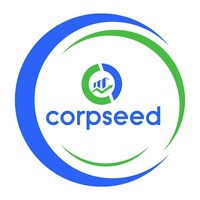From Idea to Market: Developing a Successful Product Strategy for Your Startup
Introduction
Bringing a product to market successfully is a critical milestone for any startup. However, this journey from idea to market requires careful planning and strategic decision-making. Developing a robust product strategy lays the foundation for creating a product that meets customer needs, differentiates from competitors, and drives business growth. In this essay, we will explore the key elements of developing a successful product strategy for your startup.
Understanding Customer Needs
The first step in developing a product strategy is gaining a deep understanding of your target customers and their needs. Conduct market research, interviews, and surveys to identify pain points, desires, and preferences. Analyze existing solutions in the market to determine how your product can offer unique value and address unmet needs. By aligning your product with customer needs, you increase the chances of creating a successful and marketable solution.
Defining Product Vision and Goals
Once you understand customer needs, define a clear product vision and set specific goals. Your product vision outlines the long-term direction and purpose of your product, while goals provide measurable targets to work towards. Consider factors such as market potential, target audience, scalability, and revenue goals. A well-defined product vision and goals guide your decision-making process and keep your team aligned and focused.
Market Analysis and Competitive Positioning
Conduct a thorough analysis of the market and your competition to identify opportunities and potential threats. Understand the market size, trends, and dynamics. Evaluate competitors’ products, pricing, distribution channels, and marketing strategies. Identify gaps or areas where your product can differentiate and provide unique value to customers. By positioning your product strategically in the market, you can carve out a distinct space and attract customers.
Product Roadmap and Iterative Development
Develop a product roadmap that outlines the key milestones, features, and functionalities of your product. Break down the development process into manageable phases, allowing for iterative improvements and feedback from users. Prioritize features based on customer needs, technical feasibility, and business goals. A well-structured roadmap ensures a clear path for product development and helps manage expectations internally and externally.
User-Centric Design and User Experience
Design your product with a strong focus on user experience (UX) and usability. Conduct user testing and gather feedback at various stages of development to ensure your product is intuitive, easy to use, and addresses customer pain points effectively. Incorporate user-centric design principles, such as clear navigation, visual appeal, and responsive interfaces. A positive user experience enhances customer satisfaction, drives adoption, and differentiates your product in the market.
Go-to-Market Strategy and Launch Planning
Develop a comprehensive go-to-market strategy that outlines how you will bring your product to market effectively. Identify target customer segments, positioning, pricing, distribution channels, and marketing tactics. Plan your launch activities, including pre-launch marketing, PR efforts, and customer acquisition strategies. Consider partnerships, influencers, and early adopter programs to generate buzz and traction. A well-executed go-to-market strategy maximizes visibility, creates excitement, and drives initial adoption.
Monitoring and Iterative Improvement
After launching your product, closely monitor its performance, gather user feedback, and analyze data to identify areas for improvement. Use analytics tools to track key metrics, such as user engagement, conversion rates, and customer satisfaction. Incorporate user feedback and market insights into your product roadmap to iterate and enhance your offering. Continuous improvement ensures that your product remains relevant, competitive, and aligned with evolving customer needs.
Conclusion
Developing a successful product strategy is essential for bringing your startup’s idea to market. By understanding customer needs, defining a clear product vision, conducting market analysis, and prioritizing user-centric design, you can create a product that stands out in the market. A well-planned roadmap, a robust go-to-market strategy, and a commitment to iterative improvement contribute to the success of your product. Remember that the journey from idea to market is not a linear process, and adjustments and adaptations may be necessary along the way. With a strong product strategy in place, you can navigate the challenges, seize opportunities, and position your startup for long-term success.

















